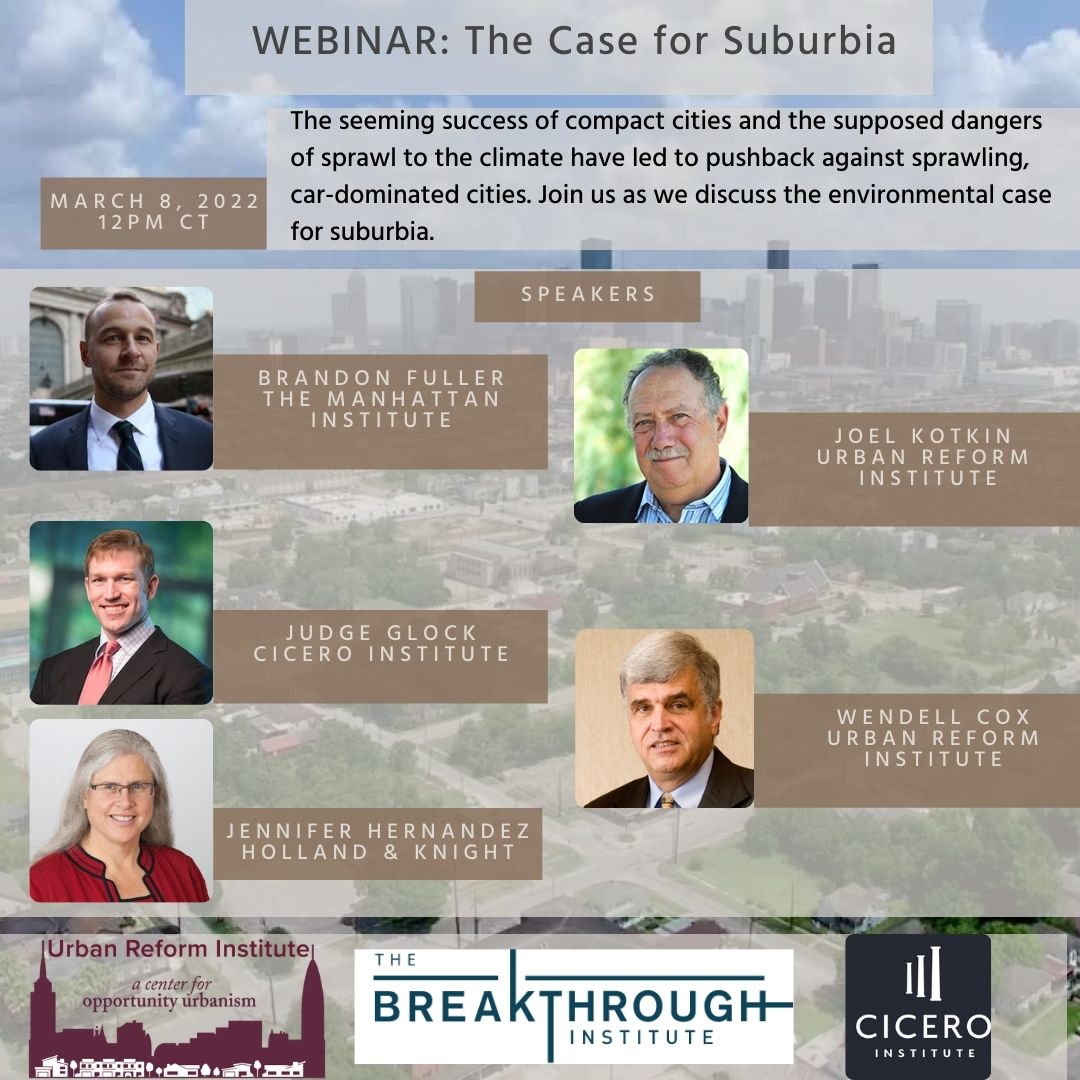Perhaps nowhere is the gap between America’s cognitive elite and its populace larger than in their preferred urban forms. For nearly a century—interrupted only by the Depression and the Second World War—Americans have been heading further from the urban core, seeking affordable and safe communities with good schools, parks, and a generally more tranquil lifestyle. We keep pushing out despite the contrary desires of planners, academic experts, and some real estate interests. In 1950, the core cities accounted for nearly 24 percent of the U.S. population; today, the share is under 15 percent, according to demographer Wendell Cox. Between 2010 and 2020, the suburbs and exurbs of the major metropolitan areas gained 2.0 million net domestic migrants, while the urban core counties lost 2.7 million.
This is less a growth in “bedroom suburbs,” supplying workers to the urban core, but one that serves multiple employment centers and commercial development. The latest edition of Commuting in America estimates that almost 70 percent of metropolitan-area workers now live and work in the suburbs; trips within suburbs or suburb-to-suburb commutes constitute more than double the commutes with a central business district as the final destination.
The urban fringe is where the American dream is now being rediscovered. But these fringes remain widely disdained in academia, media, and the planning community. This was most evident during the financial crisis when there were widespread media accounts suggesting, among other things, that the exurbs would become “the next slums,” the equivalent of “roadkill” doomed by changing economics and demographics. The New York Times even suggested how to carve up the suburban carcass, with some envisioning that suburban three-car garages would be “subdivided into rental units with street front cafés, shops and other local businesses,” while abandoned pools would become skateboard parks. Yet this is exactly what did not happen.
The Exurban Revolution
In the new In the new Urban Reform Institute report, we identified the fifty highest‑growth large counties in terms of net domestic migration from 2015 to 2019. These areas grew their population at 7.5 times the rate of the country’s other 3,100 counties during this period and gained 1.8 million net domestic migrants. Out of the fifty, all but seven are located in combined statistical areas (CSAs) of more than 500,000 residents. And each of these outer counties are within or close to a two-hour commute time of a central core county. Key areas include Atlanta, Dallas–Fort Worth, and Orlando.
The key demographic headed to these places is young people in prime family formation years. From 2015 to 2019, these counties saw an increase in twenty-five- to thirty-four-year-olds of 12.8 percent, almost four times the 3.4 percent growth rate in the other counties. The highest‑growth counties also have a far higher rate of school-age children (five- to fourteen-year-olds) per household than the rest of the nation—0.66 compared to 0.43 for the other counties. The highest growth counties have 3.5 times as many school-age children per household as, for example, Manhattan and San Francisco and 75 percent more school-age children per household than other counties in the United States.
This migration is not a repeat of the “white flight” that drove peripheral growth a half century ago. To be sure, during the great mass suburbanization of the mid-twentieth century, many communities—Levittown and Lakewood are well-known examples—excluded ethnic minorities, providing planners and “smart growth” advocates a rationale to claim that single-family neighborhoods are inherently racist ever since. This assertion is seriously out of date, however. Over the past decade, non-Hispanic whites accounted for less than 4 percent of growth in suburbs and exurbs, while Latinos accounted for nearly half, with Asians, African Americans, mixed race, and other groups making up the balance.
These areas tend to be particularly attractive to well-educated immigrants. The wildly popular Woodlands planned community near Houston is roughly 30 percent Hispanic, African American, and Asian. In Irvine, California, arguably the most successful planned development, a majority of the population is nonwhite and over 40 percent Asian. In the Tres Lagos development in McAllen, Texas, three-quarters of all buyers are middle-class Hispanics, notes developer Nick Rhodes, for houses that average under $200,000. “We have a young population that is looking for larger homes and safety,” suggests the twenty-seven-year-old Rhodes. “These are people who cannot afford Irving or even Dallas but want parks and good schools.”
Read the rest of this piece at American Affairs Journal.
Joel Kotkin is the author of The Coming of Neo-Feudalism: A Warning to the Global Middle Class. He is the Roger Hobbs Presidential Fellow in Urban Futures at Chapman University and Executive Director for Urban Reform Institute. Learn more at joelkotkin.com and follow him on Twitter @joelkotkin.
Homepage photo: Ken Lund via Flickr CC 2.0 License.

